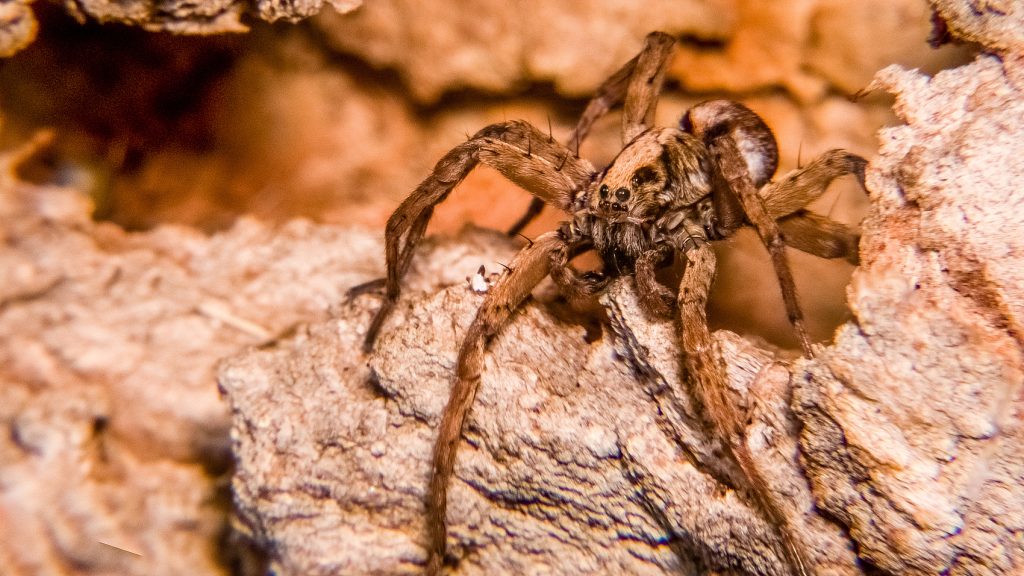Wolf spiders are a widespread species with over 3,000 types found globally, including more than 200 in North America. So, it’s not uncommon to run into them. But should you be worried? Are wolf spiders dangerous, and what should you do if you find one? Let’s explore.
Identifying a Wolf Spider
Wolf spiders belong to the Lycosidae family and have some distinct features. They have eight eyes arranged in three rows: four small ones on the bottom and two larger pairs above. Female wolf spiders are also unique in that they carry their egg sacs on their backs. These spiders range from 0.5 to 2 inches long and are known for their camouflage abilities, often appearing in gray, brown, or black to blend into their environment.
Wolf spiders have several common nicknames based on their physical traits and habitat, such as brush-legged, two-lined, ground, or rabid wolf spiders. Their appearance and markings can vary based on where they live, but many have distinctive lengthwise stripes in shades like tan, black, and orange.
Wolf Spider Behavior and Habitat
These spiders are solitary and do not spin webs. Instead, they actively hunt prey, which is why they’re associated with wolves. They typically live outdoors in gardens, open fields, woodpiles, and sometimes inside sheds or basements. Depending on the species, some wolf spiders are territorial, creating burrows to protect their eggs, while others roam freely in search of food.

What Do Wolf Spiders Eat?
Wolf spiders are hunters. They catch insects and small animals using their long fangs and agile legs, which help them move quickly and catch prey. While they can swim and climb, they mostly stick to the ground, hunting in dry areas.
Are Wolf Spiders Dangerous?
While wolf spiders are venomous, their venom is only harmful to their prey, not humans. If bitten, symptoms are similar to a wasp sting—redness, swelling, and itching. Wolf spiders typically only bite in self-defense, so bites are rare and usually happen if the spider feels threatened or trapped.
Identifying and Treating Wolf Spider Bites
If bitten, you might notice some redness, swelling, and mild pain, which can last up to 10 days. In rare cases, the skin around the bite may darken. Basic first aid involves cleaning the area, applying ice or a baking soda compress, and using antibiotic ointment. If symptoms worsen or you experience a high fever, seek medical attention.
Where Do Wolf Spiders Live?
These beneficial predators prefer outdoor habitats with lots of insects to hunt, such as gardens, fields, and wooded areas. They may also seek shelter in garages, basements, and sheds. While some types dig burrows, others roam freely.

Wolf Spider Reproduction
Wolf spiders mate in the fall, and the males typically die before winter. The females find sheltered spots to lay their eggs in silk cocoons. Some species carry their egg sacs, while others store them in burrows.
Should You Get Rid of Wolf Spiders?
Wolf spiders are not considered pests—they actually help control insect populations. If you see one indoors, gently capture and release it outside. There’s no need to kill these helpful hunters.
Avoiding Spider Bites
To minimize spider encounters, keep your home clean and free of clutter, store food properly, and seal up cracks. Outside, keep woodpiles and debris away from your home. Good housekeeping and insect control are key to preventing spider problems indoors.
In summary, wolf spiders are fascinating creatures that play an essential role in controlling pests. While their size and appearance might be intimidating, they’re generally harmless to humans and beneficial to the environment.












